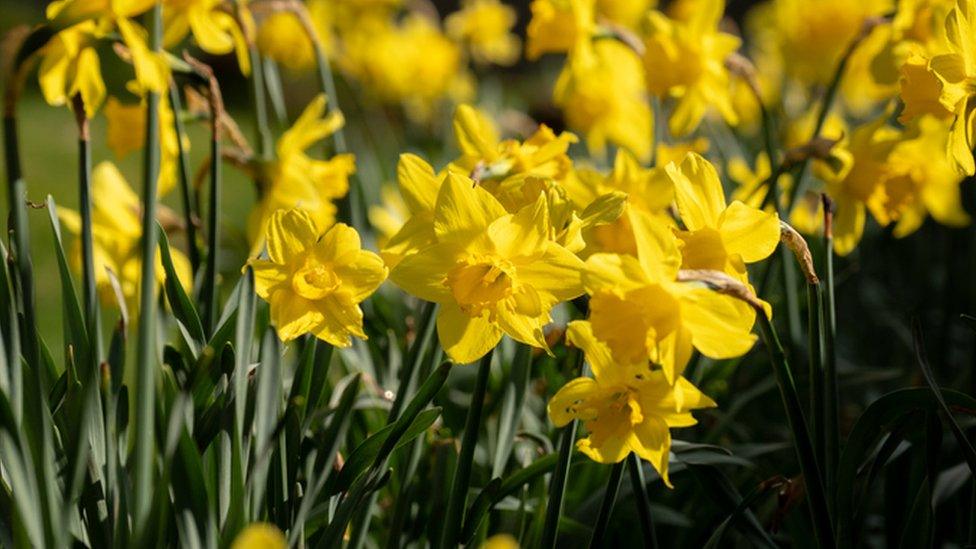St David's Day: How and when the daffodil and the leek became the national symbols of Wales
- Published
- comments

Daffodils are famous symbols of Wales - but why? And what do they have to do with leeks?
The 1st of March is St David's Day when people celebrate the patron saint of Wales.
It's a chance for Welsh people everywhere to celebrate their country and its history.
You can find out more about St David's Day here.
You might see a lot of people wearing badges shaped like daffodils or leeks because the two plants are symbols of Wales - but where did this tradition come from, and why?
How did the daffodil become the national symbol of Wales?

As well as the iconic bucket hat, you'll often see Welsh football fans wearing daffodil hats during games
While there is no accepted single answer for why the daffodil was adopted as the symbol of Wales and became its national flower, there are a number of competing theories.
One theory is that around 1 March, when St David's Day is celebrated, we begin to see daffodils starting to flower.
But, it could also relate to an older traditional Welsh symbol - the leek. That's because the Welsh word for daffodil is cenhinen Bedr, which translates to "Peter's leek". Sadly, it's not known who the mysterious Peter was who gave his name to the flower.
Because these plants both bloom at this time of year, the daffodil might have been chosen as a slightly prettier and more pleasant smelling option than the leek?
When the Princess of Wales married her now husband Prince William, the Prince of Wales, she wore a wedding dress featuring hand cut lace flowers depicting a rose for England, a thistle for Scotland, a daffodil for Wales and a shamrock for Northern Ireland.
Why is the leek the national symbol of Wales?

Leeks are vegetables and are part of the allium family to which garlic and onions also belong
This also has its roots in legend in the year 1346, when the Prince of Wales defeated the French at the Battle of Crécy in northern France.
Welsh archers are said to have fought bravely in a field of leeks, and as a reminder of their bravery and loyalty, the Welsh began to wear a leek in their caps every St David's Day.
The legend also makes an appearance in William Shakespeare's play Henry V written in the 1500s, when a character from Wales wears a leek to show that he is from Wales.
During the Tudor period, monarchs asked their guards to wear leeks on their uniforms on St David's Day. One legend has it that when St David went into battle, he asked all of his army to wear leeks on their armour to keep them safe.
And in 1536, Henry VIII is said to have presented his daughter with a leek on St David's Day, historian Dr Juliette Wood, a lecturer at Cardiff University said.
She said while we don't know whether any of the legends are true, they tell us more about who we are than they do about history.
The connection between between leeks, daffodils, St David's Day and being Welsh is very strong, even if they aren't based on facts, she added.
